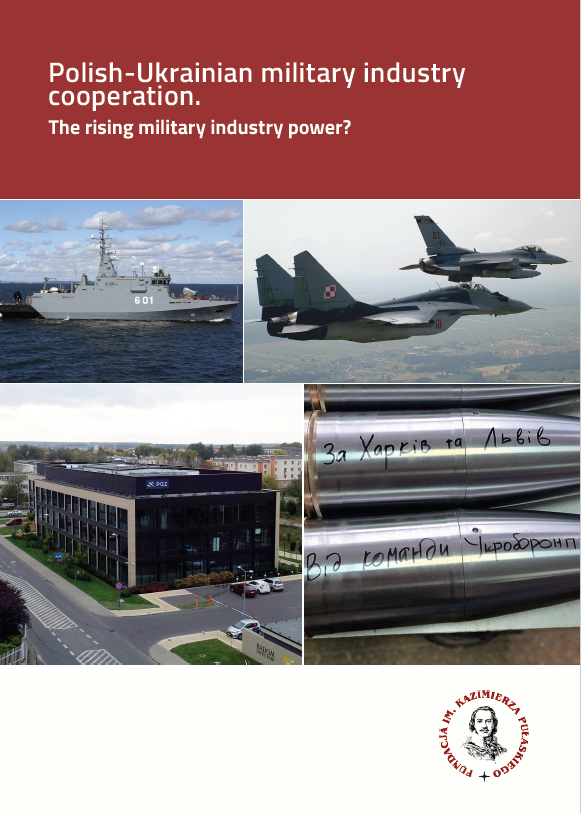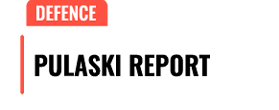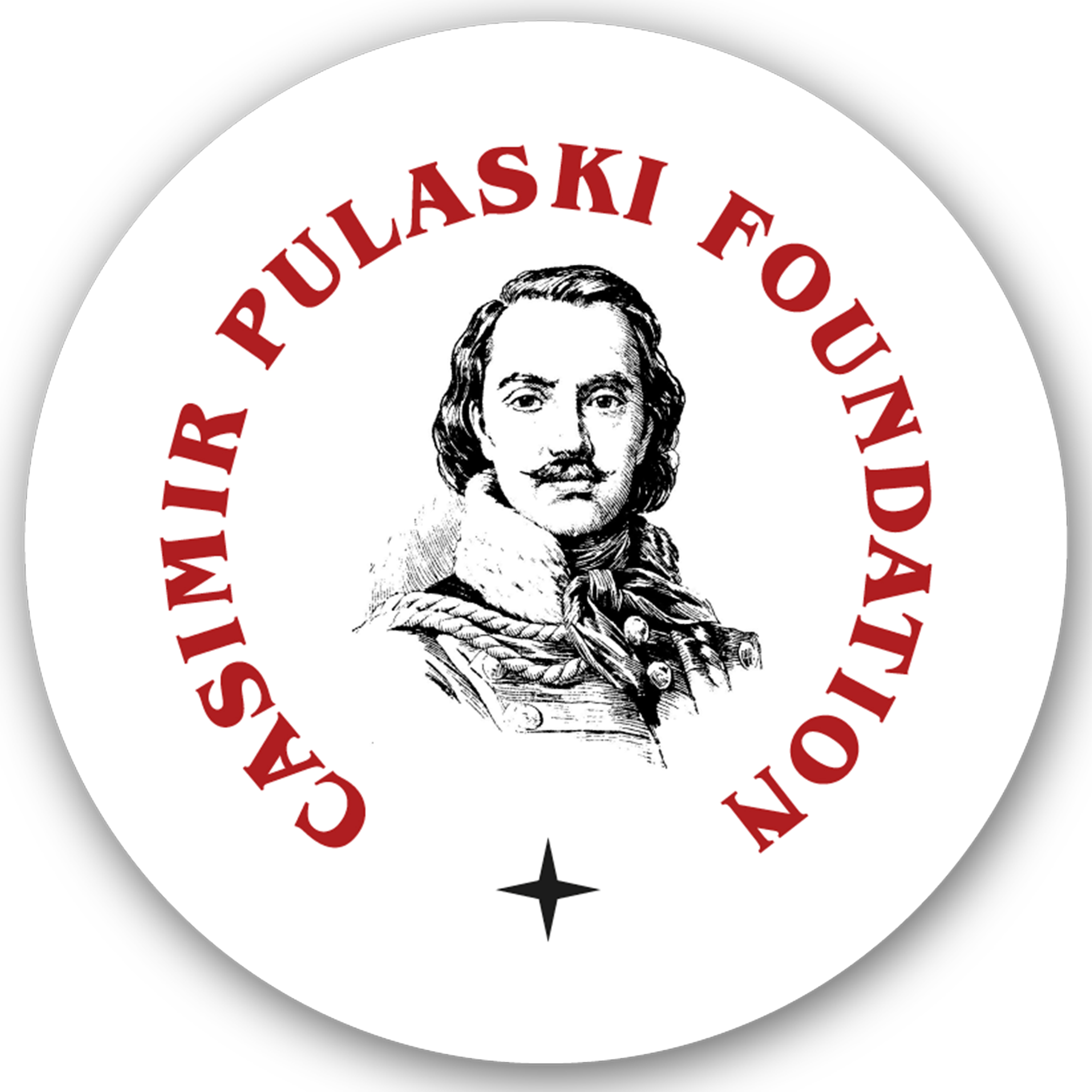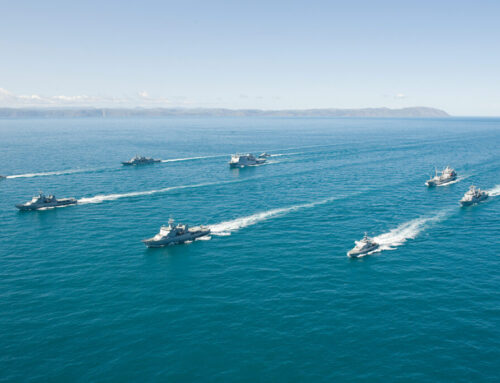Okladka – Polish-Ukrainian Military Industry Cooperation
Autor foto: Public Domain and The Chancellery of the Prime Minister, Republic of Poland

Polish-Ukrainian military industry cooperation. The rising military industry power?
19 września, 2023


Okladka – Polish-Ukrainian Military Industry Cooperation
Autor foto: Public Domain and The Chancellery of the Prime Minister, Republic of Poland
Polish-Ukrainian military industry cooperation. The rising military industry power?
Autor: Bartłomiej Kucharski, Dariusz Materniak, Paulina Zamelek i Andrzej Kozłowski
Opublikowano: 19 września, 2023
Introduction
The large-scale Russian invasion of Ukraine at the beginning of 2022 has surprised many experts and is a consistent, heavy reminder to the European people that war in Europe is not a matter of the past. The invasion also brought significant changes in various areas of the worldwide security landscape. It started a new wave of military procurements and initiatives: repairing damaged military equipment and providing ammunition and other supplies needed for the contemporary battlefield. These factors have led to the reinvigoration of the military industry worldwide.
Both sides of the war are consistently searching all over the world for new military equipment, but this arms race has affected other countries as well. NATO members have increased defence spending and engaged in buying and producing new military equipment. One of the countries significantly active in this area is Poland, which decided to ramp up its defence spending to 4% of its GDP in 2023. Poland is also the main military hub for weapon deliveries to Ukraine, with the Rzeszów airport playing a leading role in this dimension. While the Polish Armed Forces have relied on post-soviet equipment in the past, they have engaged in an extensive transformation process to match Western standards and equipment. Thus, these factors make military cooperation between Poland and Ukraine a natural initiative. Despite this, it is not easy and there are many inherited challenges, but also opportunities for such cooperation.
Our report intends to find out the fields of potential cooperation, identify barriers and challenges, and provide recommendations on how to overcome them. It will also show how the Polish industry and security apparatus may use the Ukrainian war experience to improve their military products, as well as build common projects both in the short-term and long-term perspective. Lastly, our report will try to answer the question about the feasibility and profitability of any form of Polish-Ukrainian military collaboration.
Main research questions:
- What are the capabilities and strong/weak points of the Ukrainian and Polish military industries?
- What are the main barriers and challenges for the cooperation between the Ukrainian-Polish military industry and how do we overcome them?
- How can the Polish and Ukrainian industries capitalise from cooperation with each other?
- How to protect the possible cooperation between Polish and Ukrainian industries against hostile activities in the kinetic and cyber warfare domains?
- What are the short-term and long-term projects both countries can engage in?
- Is Polish-Ukrainian military company cooperation feasible?
The report consists of fourth chapters:
- Polish and Ukrainian defence industry – characteristic
- Potential financing sources for Polish-Ukrainian military projects
- Potential areas of cooperation between Polish and Ukrainian arms companies
- Security of the Polish-Ukrainian military cooperation
The first chapter describes the main characteristics of the Polish and Ukrainian military industries, enumerating the main military companies and research institutes and identifying strengths and weaknesses, as well as examining the impact of the 2022 war on the Ukrainian defence industry. Not to mention, the many similarities between the Ukrainian and Polish defence industries, including common areas of cooperation, which are good signals for the future.
Despite this, military cooperation needs financial resources, and thus Chapter Two will analyse the potential sources. It will look at different EU funds located within Permanent Structured Cooperation (PESCO) and other initiatives, which can be used in the area of military cooperation between Poland and Ukraine. What is more, NATO financial tools will also be analysed. The chapter ends with the possible consequences for Poland and Ukraine in the scope of the military cooperation between the two countries.
The third chapter focuses primarily on the potential areas of cooperation between Polish and Ukrainian arms companies. It identifies munitions such as tanks and infantry fighting vehicles, artillery, drones, small arms, as potential resources and other possible fields of cooperation by looking at past cases and recommending further projects. The chapter will also identify the main barriers and challenges ahead, in particular the role of the war and the still existing corruption and bureaucracy in Ukraine.
The last chapter stresses that any Polish-Ukrainian military cooperation entities will be susceptible to Russian hostile activities. Analysing the historical precedents, the chapter will present past sabotage actions and cyberattacks aimed at the military industry, which were done by both Russians and other hostile third parties. Based on precedents, the chapter will depict potential scenarios of attacks and propose a set of measures to minimise the risk of a success in such scenarios.
The Polish-Ukrainian military industry cooperation is a vital element of any collaboration between the two countries. It is a big chance both for Ukraine and Poland to transform the experience of war into effective cooperation in military areas, which will not only enhance security in Europe but together will also create a strong player in the military industry.
Conclusion
There are many similarities between the Ukrainian and Polish defence industries. For example, both dominant players are state-owned enterprises. Nevertheless, the permanent underfunding of these two industries over the past 30 years had revealed consequences. A situation that began to change only about a decade ago.
Despite such a situation, the cooperation between Poland and Ukraine in the arms industry sector has a bright future, and a number of factors contribute to it. One such factor is that both countries have a common strategic interest in the field of security and defence, a shared perception of security threats and challenges and a cultural proximity between the two countries that helps to strengthen bonds. They also share experience in terms of military industry cooperation. Not to mention, since being invaded by Russia, Ukraine has been testing new military equipment, and Poland (of all countries actively supporting Ukraine in Europe) played the most vital role. Throughout the war, Polish facilities have enabled the transmission of military supplies across borders, into war-torn Ukraine, but have also been a point of repairs for damaged Ukrainian military equipment. Such a highly-visible synergy of Ukrainian battlefield experience and Polish military technology is sure to bring a lot of benefits in the future.
There are also many other common areas in which the two nations could achieve good results (on a cooperative basis). Among these, the domain of land weapons, such as armoured vehicles, anti-aircraft and artillery systems, etc., can be pointed out first and foremost. Although, in some cases, the Polish military does indeed have a significant advantage in its military advancements (for example, in it’s contemporary technology related to the maritime domain, unmanned systems, etc.) in others, Ukraine is more advanced (for example, in solutions to the production of transport aircraft). In any case, it is crucial to take advantage of emerging opportunities while also dealing with the challenges posed by current conditions.
Subsequently, the international community is in favour of extending cooperation with Ukraine and Ukrainian entities in the face of the outrages done by Russia. At this point in time, all sorts of deliberations, initiatives and active support towards Ukraine are anticipated to lead to an eventual involvement of Ukraine into the EU and NATO processes and programmes, including defence industrial assistance and joint Research and Technology (R&T) projects. With the constant growth
of EU funding for defence Research and Development (R&D), there are new ways and opportunities to finance military-related projects. Polish entities may even become a leading example in engaging adequate cooperation among all of the countries in Europe actively sending aid.
Despite these high hopes, every cooperation in this highly sensitive field will need heightened security standards. Both Polish and Ukrainian sides, which engage in such a cooperation need to be aware that they become a target of Russian and Belarussian hostile activity both in the kinetic and cyber-security field. Therefore this awareness of the landscape of threats requires the incorporation of a security designed to meet all the requisites of mutual initiatives and joint-efforts. Security must be protected and implemented before the start of these projects rather than during it. The security tools to protect against sabotage and any other hostile action in modern society must be introduced and must now include increased safety personnel and monitoring apparatus. It is beneficial to also introduce the necessary protective measures in cyberspace, which includes the adoption of the best and well-known measures to increase cyber defence of the relevant establishments. Only a well-protected partnership between Ukrainian and Polish industries will enable the cooperation and a benefit for both sides.
To read the full report click the link below






